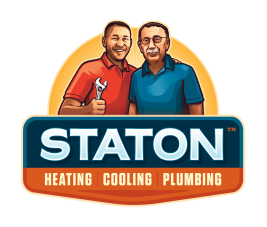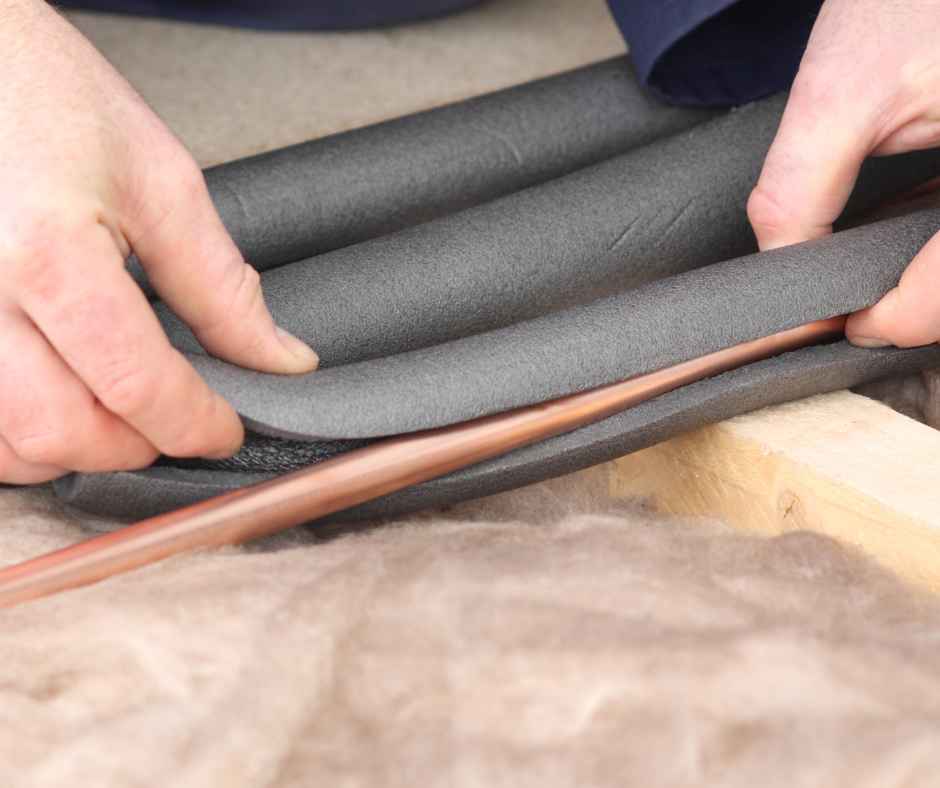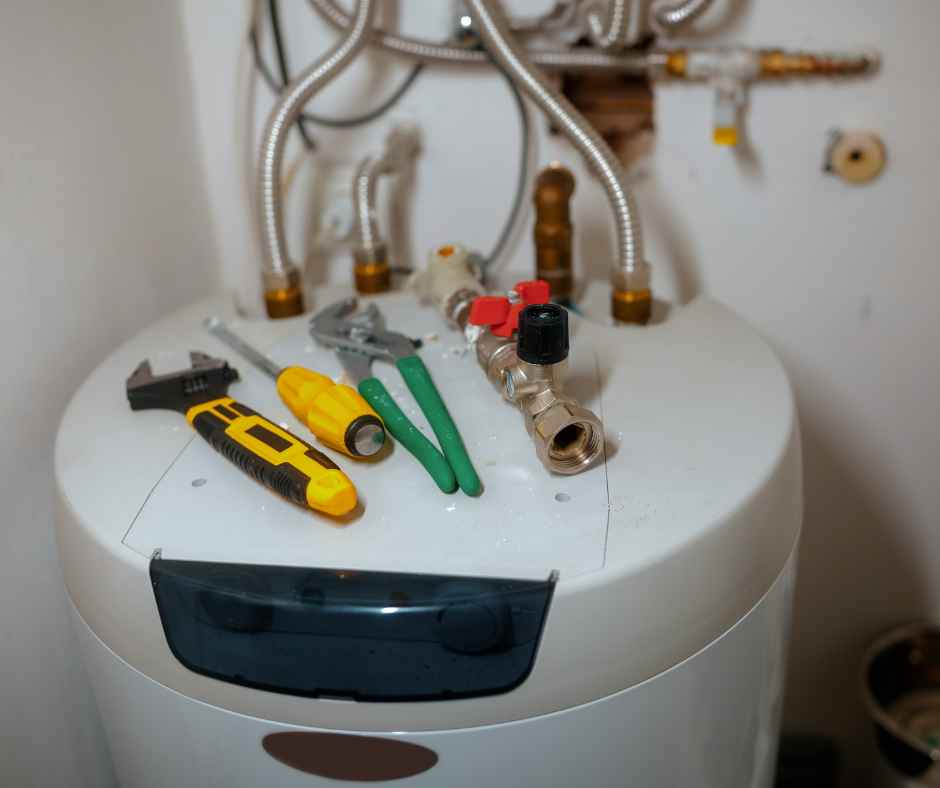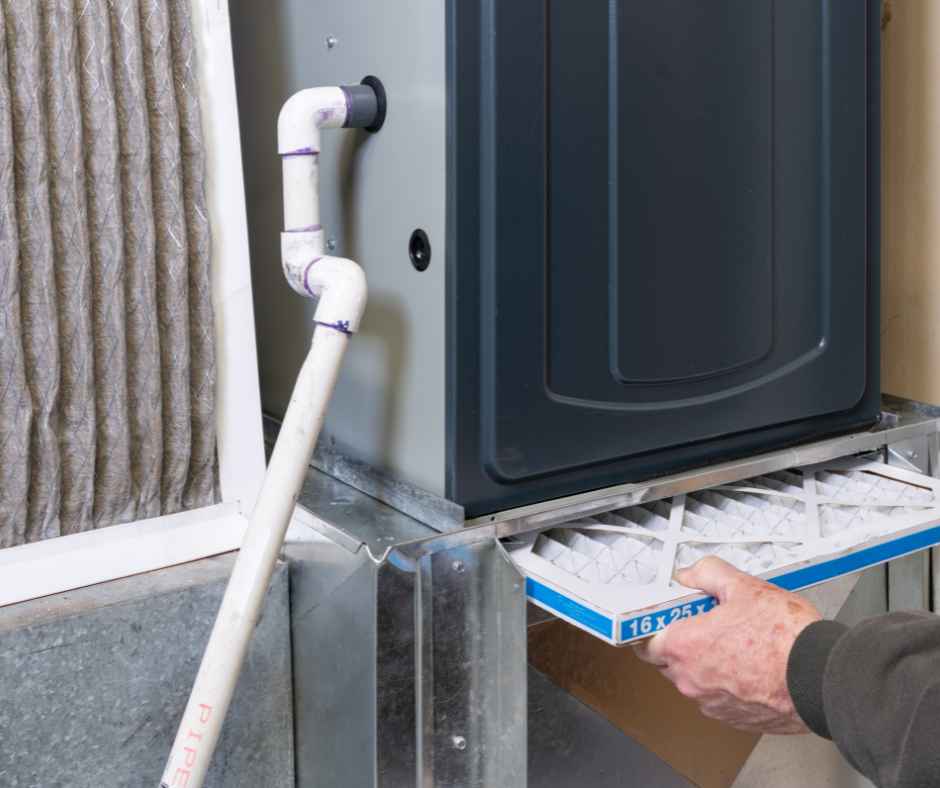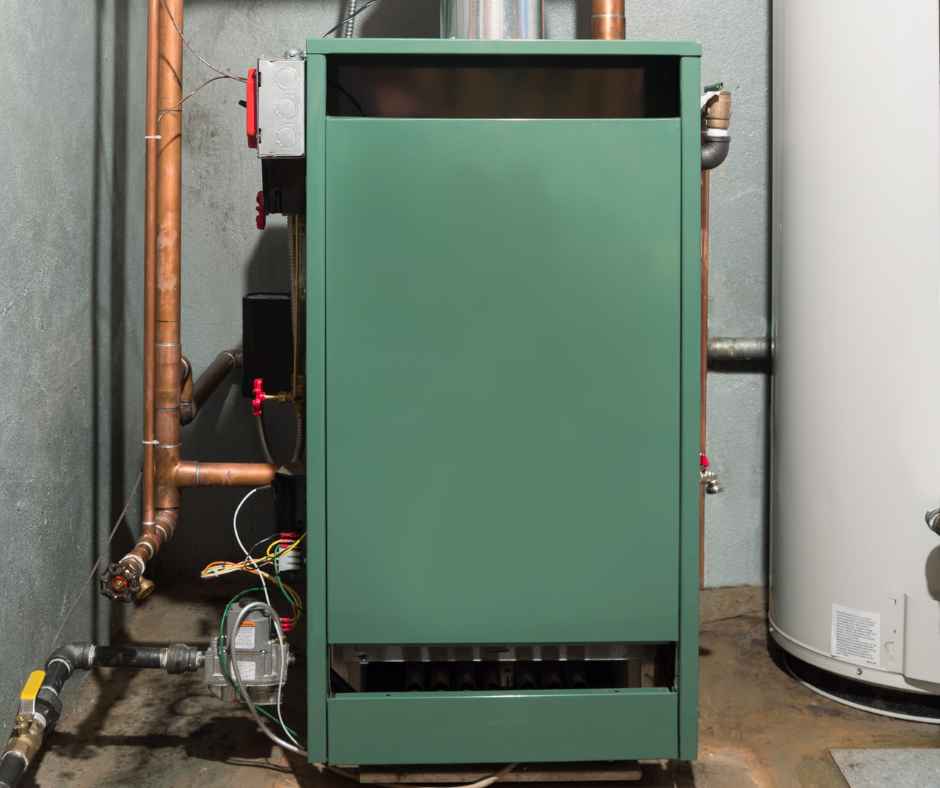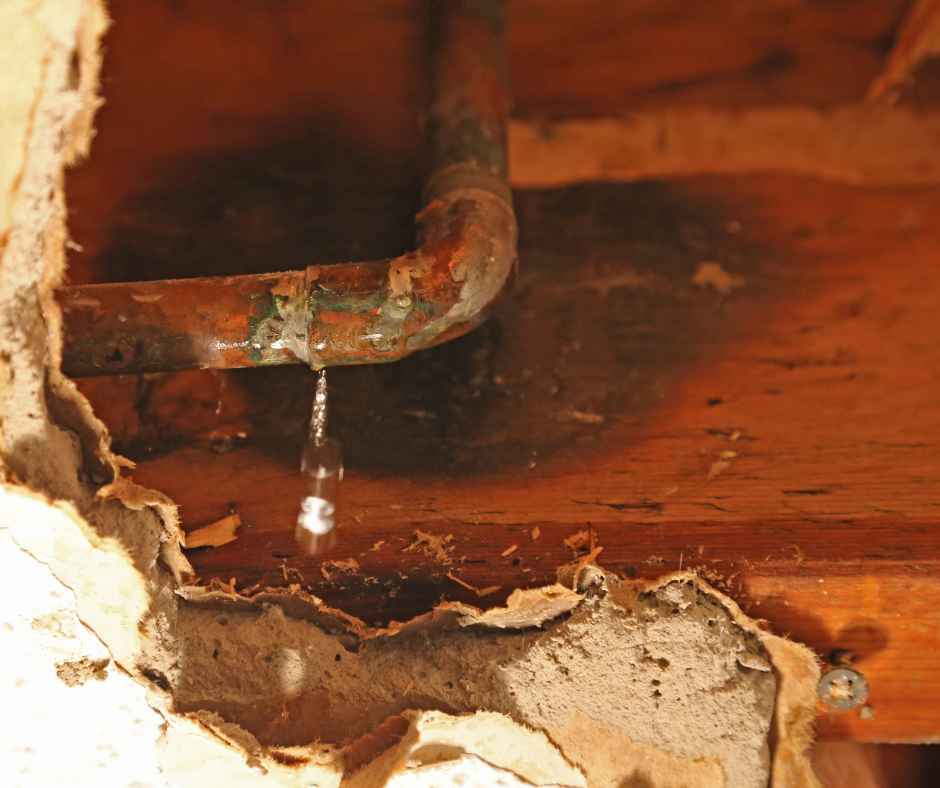Serving central Maryland & eastern shore
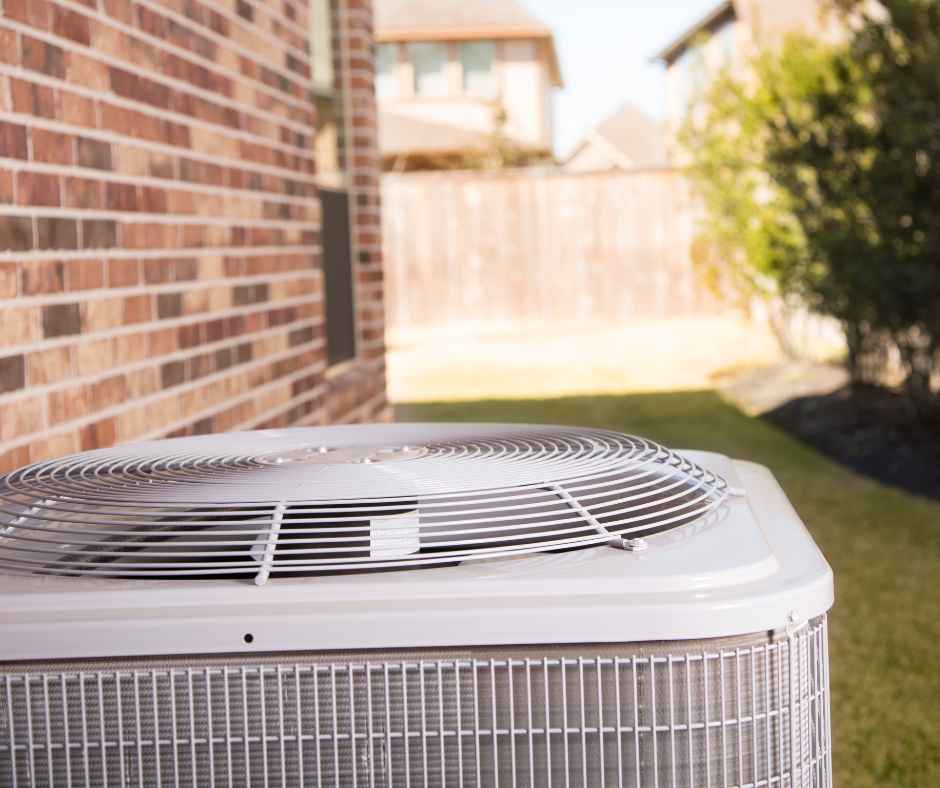
Why Is My AC Not Blowing Cold Air?
Is your air conditioner running but failing to cool your home? When your AC isn’t blowing cold air, it’s more than just a minor annoyance—it’s a red flag that something isn’t working as it should. From dirty filters to low refrigerant levels, several issues could be behind the problem. Left unchecked, these cooling issues can affect your comfort, increase your energy bills, and even damage your system. The good news? Many causes are easy to spot—and some can be resolved without a service call.
In this blog, Staton Heating, Cooling & Plumbing walks you through the most common reasons your AC might not be cooling, what you can do about it, and when to call in the pros.
What Happens When Your AC Isn’t Blowing Cold Air?
When your air conditioner runs but doesn’t cool your home, it’s often a sign that part of the system isn’t functioning correctly. The fan may still be blowing air through your vents, but instead of the cool relief you expect, you’re met with room-temperature—or even warm—air. This doesn’t just make your home uncomfortable. It also forces your system to work harder, leading to more energy consumption and wear on important components.
Several things could be going wrong behind the scenes. The issue might be as simple as a clogged air filter reducing airflow, or as complex as a refrigerant leak or a frozen evaporator coil. In some cases, it’s a thermostat that’s misreading temperatures and confusing the entire system.
Whatever the cause, one thing is certain: an AC that isn’t blowing cold air is no longer operating efficiently. And the longer the issue persists, the greater the chance you’ll be dealing with higher utility bills or costly repairs in the near future.
Common Signs and Causes of Poor Cooling
When your AC isn’t doing its job, the symptoms often start subtly and get worse over time. Knowing what to watch for can help you catch the issue early—before it turns into a more expensive repair.
Signs Your AC Isn’t Cooling Properly
If you notice any of the following, your system likely isn’t cooling as it should:
- Warm air blowing from your vents, even when the thermostat is set to cool
- Weak or limited airflow, especially in certain rooms
- Indoor humidity that feels unusually high
- Thermostat readings that don’t match how the space actually feels
- A noticeable spike in your energy bills, despite similar AC usage
These symptoms are often the first signs of a deeper problem within the system.
Common Causes of an AC That’s Not Blowing Cold Air
Once you notice your AC isn’t cooling, several common culprits may be to blame:
- Dirty Air Filter: When the filter gets clogged, it restricts airflow, making it harder for your system to cool the air effectively.
- Frozen Evaporator Coil: Reduced airflow or low refrigerant can cause ice to form, blocking the cooling process.
- Low Refrigerant Levels: Without enough refrigerant, your AC can’t absorb heat and lower the temperature inside your home.
- Thermostat Issues: A malfunctioning or poorly placed thermostat may send incorrect signals to your system.
- Blocked Condenser Unit: If the outdoor unit is surrounded by debris, it can’t release heat properly, which affects indoor cooling.
- Leaky or Damaged Ducts: Conditioned air could be escaping before it reaches your rooms, reducing overall performance.
Understanding these causes is the first step toward restoring your comfort—and protecting your HVAC system from further damage.
How to Fix an AC That Isn’t Blowing Cold Air
Fixing a cooling issue starts with identifying what’s wrong. Fortunately, some causes of poor performance are easy to check on your own. Others may require a professional inspection to diagnose and repair safely.
DIY Steps to Try First
Before calling for service, try these simple troubleshooting steps:
- Replace the Air Filter: A dirty filter is one of the most common causes of restricted airflow. Change it out if it looks dusty or clogged.
- Double-Check the Thermostat: Make sure it’s set to “cool” and the temperature is lower than the current room temp. If it’s battery-operated, try swapping in fresh batteries.
- Open All Vents and Registers: Closed or blocked vents can limit airflow and cooling power.
- Clear the Outdoor Unit: Remove leaves, grass clippings, or debris from around the condenser to ensure proper ventilation.
- Let Frozen Coils Thaw: Turn off the system and let it sit for a few hours if you suspect the evaporator coil is iced over.
These steps often resolve minor issues—especially if your system has been working fine until recently.
When to Call Staton Heating, Cooling & Plumbing
If your AC is still blowing warm air after these checks, it’s time to bring in the professionals. You should contact our team if:
- You suspect a refrigerant leak—adding refrigerant isn’t a DIY task
- The coils keep freezing despite a clean filter and clear vents
- The blower or compressor isn’t turning on, or the unit makes unusual noises
- Your system is older and struggles regularly with cooling
- You’ve tried all the basic fixes and nothing has improved
We’ll inspect your system thoroughly, provide clear solutions, and make sure your AC is ready to keep your home cool and comfortable.
How to Prevent AC Cooling Problems
While some AC issues are unavoidable, many can be prevented with regular maintenance and smart system care. A little attention throughout the year can go a long way in keeping your air conditioner running efficiently—and blowing cold air when you need it most.
Start with the basics: change your air filter every one to three months. This is one of the easiest and most important steps you can take to maintain airflow and reduce the risk of frozen coils or strain on your system. Don’t wait for visible dust buildup—set a calendar reminder and stay ahead of the problem.
Keeping your outdoor unit clean is just as important. Trim nearby bushes, remove debris like leaves or twigs, and hose down the unit if dirt starts to build up on the fins.
Additional Tips to Keep Your AC Working Properly
- Schedule professional HVAC maintenance at least once a year, ideally in the spring before peak usage
- Inspect your thermostat to ensure it’s working properly and placed away from heat sources
- Keep supply and return vents unblocked by furniture or curtains
- Watch for warning signs like rising humidity, strange sounds, or a system that runs nonstop
- Upgrade to a programmable or smart thermostat for more efficient temperature control
With these habits in place, you’ll extend the life of your AC system and avoid many of the most common cooling issues.
Wrap-Up: Get Your Comfort Back With Expert AC Repair
When your air conditioner isn’t blowing cold air, it’s more than just a comfort issue—it’s a warning sign that your system needs attention. Whether it’s something simple like a clogged filter or something more complex like low refrigerant or frozen coils, taking action early can save you from bigger problems down the line.
Some issues can be resolved with quick DIY steps, but persistent cooling problems deserve a professional touch. Delaying repairs could lead to higher energy bills, system damage, or a complete AC breakdown during the hottest part of the year.
If your AC isn’t cooling properly, don’t wait—contact Staton Heating, Cooling & Plumbing. Our expert technicians will find the root of the problem and restore the comfort your home deserves.

